Aaron Begay was 23, a young man like many, living with his extended family in an isolated Hogan near Sheep Springs on the Navajo reservation. He had a special sensibility, a tenderness evident to all who knew him. His family loved him and, despite their poverty and struggle, tried hard to encourage him to study and then work. When he started living with a young woman, and she became pregnant, they took her in without question.
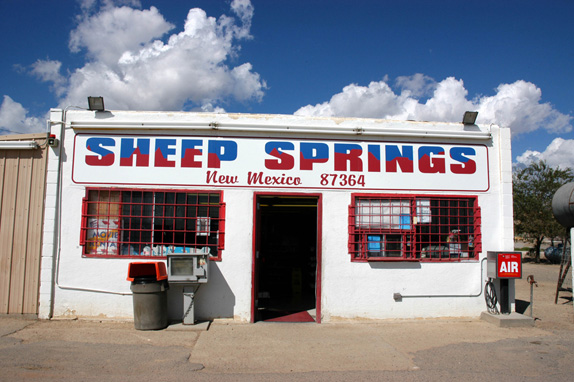 (Sheep Springs General Store and Gas Station)
(Sheep Springs General Store and Gas Station)
One night, a year ago, a number of family members walked across the way to play cards with some neighbors. They drifted home around midnight, and most slept. Around 2 a.m. they heard a commotion. Aaron, who had been drinking, had run out to the highway and thrown himself in front of an 18-wheeler. He died instantly. The truck-driver stopped, stunned. An uncle went out to identify the body. One more young man, filled with sensibility and potential, had given up.
This story affected me deeply. Perhaps because I knew—if ever so slightly—the young man involved. Years before I had been privileged to witness a peyote ceremony aimed at enabling him to express his pain, and his family members their concern. Back then, his problems were those of a child: his small black kitten had been hit on the highway, his family was in disagreement about where he should go to school, he was restless and at odds—perhaps most of all with himself.
From time to time, through a mutual friend, I had news of the family’s doings. Aaron’s gentle presence had imprinted itself on me. But I want to make it clear that I didn’t know him well. I might be writing this about any number of young men who daily choose to end their lives because living has become too painful and no help seems accessible.
Aaron’s tragic death got me to thinking about how many young people, especially young men, live or die hopelessly these days. I see this everywhere. In the US it seems particularly prevalent, and in my own family there are several young men who are struggling in one way or another. Each situation is different, each individual a world. But their numbers alone speak of society’s inability to raise young men who feel good about themselves. Who are able to make choices that help rather than destroy them.

Thirty or forty years ago, girls and women seemed the group most in need of extricating ourselves from society’s gendered injustices. Everywhere we remain disadvantaged in all sorts of ways. But feminism made a difference. As our inequality and the domination to which we were subjected became clear to us, we got together, shared our stories, and began to fight for our liberation. Today, at least in most western nations, no woman is forced to endure submission. A great community of sisters is ready to embrace each girl or woman who feels the need to take a first step toward a different sort of life.
No doubt influenced by the changes women were making, for a brief time men’s groups began springing up as well, often in reaction to the fact that so many women were beginning to find ourselves. Some of the men’s groups were legitimate gatherings, promoting self-questioning and designed to help men become whole human beings. Others reinforced the misogynist imperative. The Christian Right soon came into the picture, promoting stadium-sized meetings in which men proclaimed their God-given right to control wives and daughters.
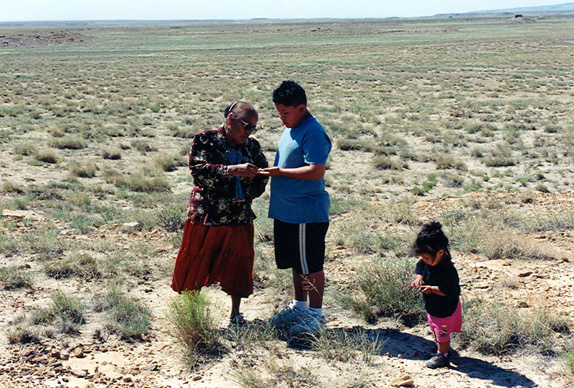 (Near Sheep Springs. Eva, Aaron, Haley.)
(Near Sheep Springs. Eva, Aaron, Haley.)
Today’s legions of lost young men represent a different phenomenon. It seems to me that it is generated, at least in the US and in countries that emulate our way of life, by a breakdown in values. Not the so-called “traditional” values conservatives are so eager to espouse, but the legitimate values that have pushed humankind forward generation to generation.
Violence is glorified beyond young male children’s ability to even decipher what it means. In our inner cities, gangs take the place of broken families, and gang initiations are horrendous enough to induce lifelong PTSD. As gang members grow up, perpetual war steps in. Now these young men are no longer only expected to gang rape a young girl, break someone’s knees with the butt of a pistol, or engage in a drive-by shooting. They are sent overseas to murder people whose culture and language they don’t understand and with whom they have no legitimate problem. Or they’re trained to press a button in Idaho that will cause the bombing of a wedding party ten thousand miles distant.
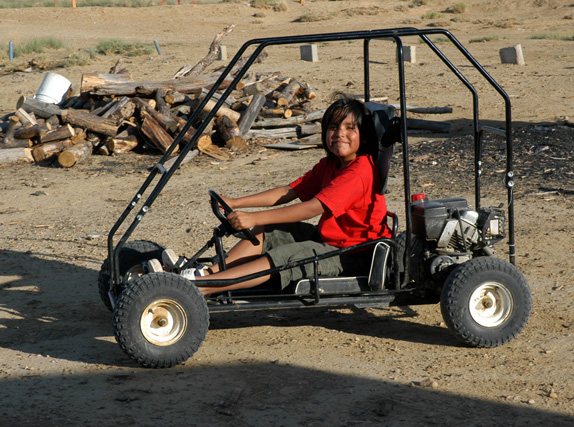 (Young boy playing on the reservation.)
(Young boy playing on the reservation.)
Meanwhile, a shattered public education system keeps these young people from learning how to think, in many cases from even learning how to read and write. School dropout rates rise, or students are passed from grade to grade until they “graduate.” Then a shattered economy keeps them from getting a decent job. A criminal banking system may have taken their family home. A system that will not recognize the necessity of universal health care fails them when they desperately need treatment for addiction, or veteran’s aid. Family problems explode into social disintegration. In cultures in which boys are still raised to believe they run things, and must display the toughness required to solve problems they can’t begin to understand, for increasing numbers suicide may seem the only answer.
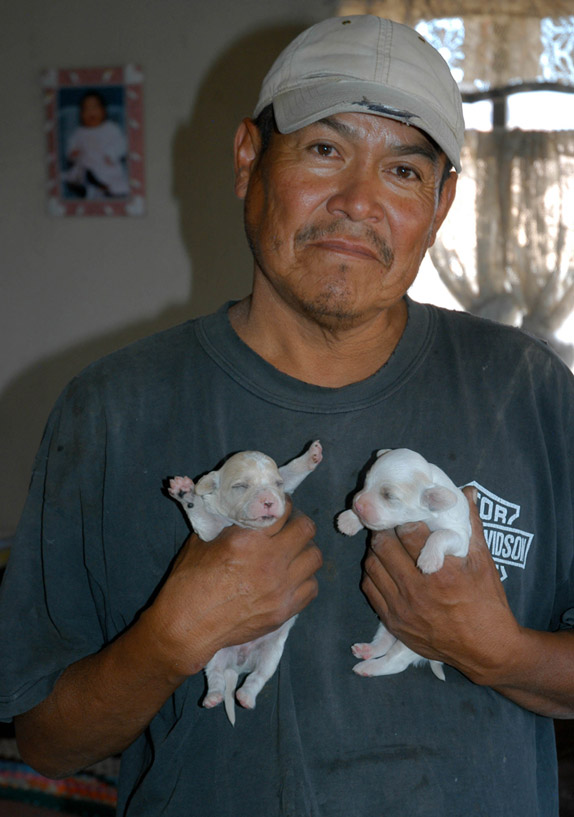 (Man with puppies, Sheep Springs.)
(Man with puppies, Sheep Springs.)
Some will end their lives by throwing themselves in front of an eighteen-wheeler roaring through the western night. Some choose police-assisted suicide, a relatively new category involving threatening a police officer and getting him to shoot. Others choose a slower route: drugs or alcohol. Yet others descend into serious mental illness, for which social support is also grossly inadequate.
Recent US statistics reveal that 22 veterans commit suicide every day. The vast majority are young men. Their percentages are invariably higher in communities of color, on Indian reservations, and wherever poverty takes its toll. And these statistics doesn’t include the increased numbers of shootings of fellow soldiers by their own in the war theaters themselves. Young people go crazy in war. Unending wars create hundreds or thousands of young men—and women—who have been changed to the extent that they are unable to reinsert themselves into peacetime life.
Many more much younger children also murder others or choose to end their own lives than ever before. Some have been victimized by bullying, which in recent years has increased exponentially, targeting gay youths in particular. The number of hate crimes is also up, as are incidents of severe domestic violence. And isolated young men, suffering from extreme cases of mental illness, claim headlines by carrying out horrendous mass murders, such as those on a number of college campuses, at a political gathering in Tucson, Arizona, a movie theater in Aurora, Colorado, or in the almost unimaginable schoolhouse shooting in Newtown, Connecticut.
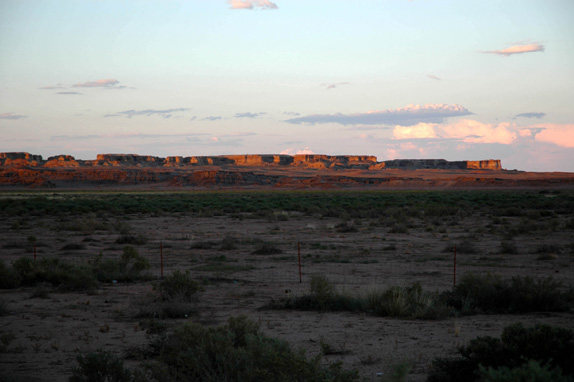 (Late afternoon near Sheep Springs, New Mexico)
(Late afternoon near Sheep Springs, New Mexico)
The Treyvon Martin murder was an example of how laws themselves often promote crime and protect murderers. When a society cannot—will not—deal with its systemic problems, hopelessness takes over. We have shown that we can neither stop this social disintegration, nor do we have the political will to curb it in any meaningful way.
It’s good when opinion pieces can end with some sense of resolution, ideas for change, some sense that something can be done about the problem presented. I can’t make that happen here. The root causes of this horror are many-layered and complex. And they’ve been building for a very long time. Politicians like to point to the complexity to explain why “nothing can be done.” Or why the other guy’s idea won’t work. Ultimately, keeping their jobs is more important than finding a solution.
I don’t mention complexity for this reason, but simply to say we need to look beyond the problem of the moment to what we’ve allowed to happen to our societies overall. Slowly, implacably, over several generations our national will to improve life for the many seems to have given way to a state of mind that has made economic inequality, war, an easiness with torture, the ownership of assault weaponry, the prevalence of violent videogames, and glorification of the preemptive strike socially acceptable. What is a sensitive young boy or man who finds himself in an untenable situation to do?
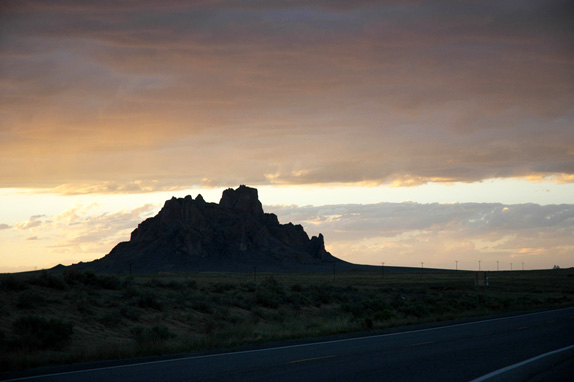 (Dusk on the New Mexico desert)
(Dusk on the New Mexico desert)
There is no immediate solution. But unless we come together as a nation and begin to deal with the underlying problems—an awareness of our environment, public education, healthcare, jobs, and legitimized hate, among others—the problems will continue to be “too complex to be solved” and we will deprive generation after generation of children their birthrights of love and opportunity.




Responses to “Aaron’s Death”